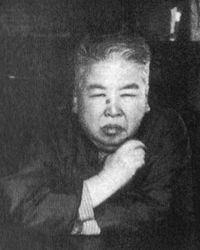Name Okuhara Seiko | ||
 | ||
Okuhara Seiko (奥原 晴湖, 1837–1913) was a Japanese painter.
Contents

Biography
Born into the samurai class and renowned for her success as a painter, Seiko resided primarily in Edo-Tokyo, a political and social center of her time. She continued to reside in Edo, where she taught painting and lived in her later years with her companion and student, Watanabe Seiran (1855-1918). Her work is influenced by the Kanō school, but is categorized as within the nanga literati school. Seiko, like most successful Japanese artists of her time, adapted Chinese literati styles to Japanese tastes.
Seiko is notable for her established and well-recognized career during the Meiji period, as well as her reputation within the primarily male literati school. Early in her career, she changed her name from Setsuko to the gender-neutral Seiko. Her work has been characterized as "masculine" in both painting and calligraphy, which may be attributed both to the liberal lifestyle she maintained and the role of women painters at the time. Seiko was also noted for wearing masculine clothing and short hair, deliberately eschewing a feminine persona. As a famous female bunjin (literati artist) artist, she is renowned for earning her own success with her art without literary or artistic connections, much like her contemporary Noguchi Shohin. Both artists also omitted the feminine character ‘joshi’ in their signatures, like many female artists. She and Noguchi Shohin were friends of the staesman Kido Takayoshi and they enjoyed his patronage. Kido and the two of them would create gassaku which are collaborative paintings that include both pictures and text.
Notably, research about female painters in East Asia during the 19th and 20th century is lacking. Historians have suggested that this is not due to a dearth in practicing female artists, which began to be more widely accepted in the 18th century, among the daughters of the gentry. Although women were celebrated as authors and poets, paintings by female artists may have been characterized by Japanese historians as effeminate.
Style
She was a minor pupil of Tani Bunchō, but because of her gender, was not allowed to enter into an apprenticeship. Part of her artistic training involved the coping of funpon (pictorial models), which may be seen in her work and were also later used in her teaching. The use of funpon was derived from the Chinese, as the literati practice followed a Chinese example. Seiko was celebrated for her individual style, which drew from a variety of artistic elements and examples. During Japan at the time, learning through imitation in order to best achieve personal style and expression was reflective of the literati culture. Although Seiko reflects Kanō influences, the development of her brushstroke technique over the course of her career further demonstrates her distinctive style.
